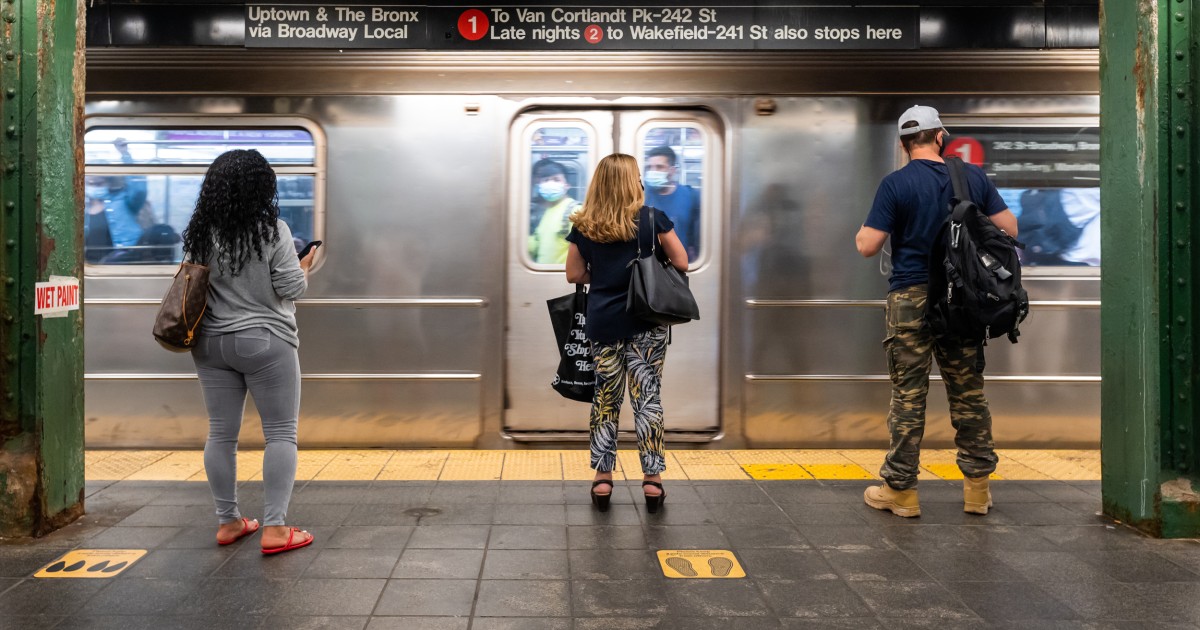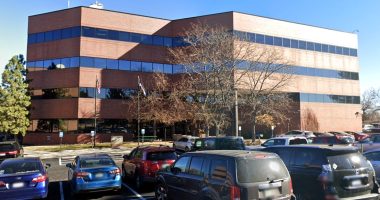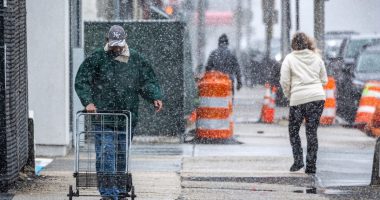
Those returning to the daily commute this summer can expect to see free and discounted rides, shorter wait times and even new technology to provide greater safety and convenience — all part of an effort to recapture ridership as the coronavirus recedes and the U.S. reopens.
While making up the lost revenue is a major motivation for transit systems, some are also looking to provide equitable access for lower-income front-line workers who have relied on their services throughout the pandemic.
“We are essential workers moving essential workers and delivering essential service to our community,” said Carrie Rose Pace, spokesperson for the public transit system in Richmond, Virginia.
First, the revenue problem: The nation’s systems hemorrhaged money after the pandemic began, with a projected net revenue shortfall of nearly $40 billion through the end of 2023 because of related losses, according to projections from the American Public Transportation Association.
New York’s Metropolitan Transportation Authority — which touts itself as the largest in the country by ridership — took in an estimated half of its revenue from fares and tolls before the coronavirus hit. But by the spring of last year, subway ridership alone had plummeted by nearly 90 percent.
Other major systems also faced financial free-fall: The San Francisco region’s Bay Area Rapid Transit, which relies on riders for about 60 percent of its revenue, saw those revenue projections evaporate from an expected half a billion dollars in the last fiscal year to just a projected $60 million this year.
“Imagine if 60 percent of your income were to go away overnight,” BART President Mark Foley said. “It’s pretty significant.”
While three successive rounds of federal aid provided enough money — about $70 billion — to keep many trains and buses throughout the country operating through 2023 and beyond, some systems will be facing financial uncertainty as soon as next year, Paul Skoutelas, president and CEO of the American Public Transportation Association, said.
Scott Bogren, executive director of the Community Transportation Association of America, explained that smaller transit agencies are more likely to use federal aid longer in part because they are often less dependent on fares.
“The bigger you get, the more likely you are to see that those funds were fully spent really quickly,” he said, referring to federal assistance.
Gauging the recovery
Public transit ridership has started to bounce back this year, but it’s still at around half of pre-pandemic levels, according to the American Public Transportation Association.
And larger systems are facing slower rebounds: The Bay Area’s ridership this week was just a fifth of pre-pandemic levels, and New York’s MTA also remains below the national average in ridership recovered, at just over 40 percent of pre-pandemic subway use during the week.
Still, Catherine Rinaldi, the president of the MTA Metro-North Railroad, said she’s encouraged by such numbers, which are roughly on track with a forecast by the consulting firm McKinsey last year.
Precise projections are difficult to come by given the transformation of the traditional workplace during the pandemic, but McKinsey said the MTA should hit a “new normal” of ridership that amounts to about 80 percent to 92 percent of pre-pandemic levels by around the end of 2024.
“It may not be exactly what we were doing back in 2019,” but the MTA is “very, very optimistic,” Rinaldi said.
Skoutelas said he hopes public transit will be close to pre-pandemic levels within the next couple of years, but added their return to normalcy is intertwined with the country’s economic and social recuperation.
Transit recovery is “a function of how people get back to their normal lives,” he said. “And I think it’s going to take some time to get there.”
Advocates are also looking to upcoming legislation, like the proposed infrastructure package and a bill to fund highway and rail improvements, to provide the possibility of further innovation.
The Biden administration is pushing to transform the country’s infrastructure with a bipartisan plan that would invest $579 billion in new spending — including $49 billion for public transit and $7.5 billion to convert the nation’s fleets of transit and school buses to electric power as one of its climate related provisions.
Still, trade groups like the American Public Transportation Association are lobbying for more. The group favors the funding levels in the House-passed surface transportation bill, which would provide $109 billion for public transportation, plus $32 billion for Amtrak. That bill faces an uncertain future in the evenly split Senate.
Redesigned routes
In the meantime, major systems are finding new ways to lure riders back.
The MTA added two dozen new trains to the Metro-North line in June — mostly at peak times. Although the train service will still be at only about two-thirds of pre-pandemic levels, Rinaldi said, she hopes the increase will be “a huge incentive for more and more people to come back.”
The Washington Metropolitan Area Transit Authority, meanwhile, is increasing rail service in the evenings — the difference between a 20-minute and a 12-minute wait on some lines.
“We’re doing everything we can to make sure that Metro maintains its status as the preferred option, and that people don’t get back into their cars to commute to work,” the transit authority board’s chairman, Paul Smedberg, said.
Cleveland’s transit authority, meanwhile, rolled out a system redesign last month that put twice as many residents within a half a mile of transit stops that run at least every 15 minutes, its director of service management, Joel Freilich, said.
The Covid-19 pandemic “underscored what our community had already said” when the redesign first began a few years ago, he said: that essential workers are among the most reliant on public transportation, and “every hour is rush hour for somebody.”
Outside metro areas, the fall-off in ridership allowed transit systems time to experiment with new ways of providing service, said Kendra McGeady, director of Pelivan Transit in northeast Oklahoma. Her system launched an evening on-demand transportation service in partnership with Uber last month, allowing residents to hail a public shuttle on the Uber app.
“Rural transit, as a whole in the industry, is really coming out of this emerging a whole new system,” McGeady said.
Safety, and savings
Convenience is one incentive for riders, safety assurances are another. The MTA mounted #TakeTheTrain and #TakeTheBus advertising campaigns in May to raise awareness of its rigorous disinfecting protocols and other safety measures, like providing tap-and-go payments for riders through prepaid cards, bank cards or smart devices.
And the MTA’s Long Island Rail Road — the busiest commuter rail in North America — added a feature to its app that lets riders waiting on platforms see which rail cars are the least crowded.
Other systems are trying to hit riders where it matters most: in their wallets.
The Chicago Transit Authority is offering half-off day passes this summer, while Washington, D.C., will provide free transfers between buses and trains. And in San Francisco, BART will discount all fares by at least half during September.
Richmond’s transit system, meanwhile, hasn’t charged fares on its buses and vans since the onset of the pandemic. The city originally sought to keep its drivers socially distanced from riders, but the transit board voted recently to continue free service through next June based in part on the recognition they serve primarily low-income riders, Rose Pace said.
The system is now pursuing avenues such as funding from the state to stop fare collection for good, a move proponents said could enhance social equity. Many transit advocates stressed the need for innovation to better serve economically stressed communities during the pandemic recovery and beyond.
Robbie Makinen, CEO of Kansas City Area Transportation Authority, said his agency has been moving to zero fare for several years and fully implemented the change around the start of the pandemic.
“It’s not just about zero fare for zero fare’s sake,” he said, adding, “It’s about showing the community what a difference this makes, to give people access.”
Source: | This article originally belongs to Nbcnews.com










